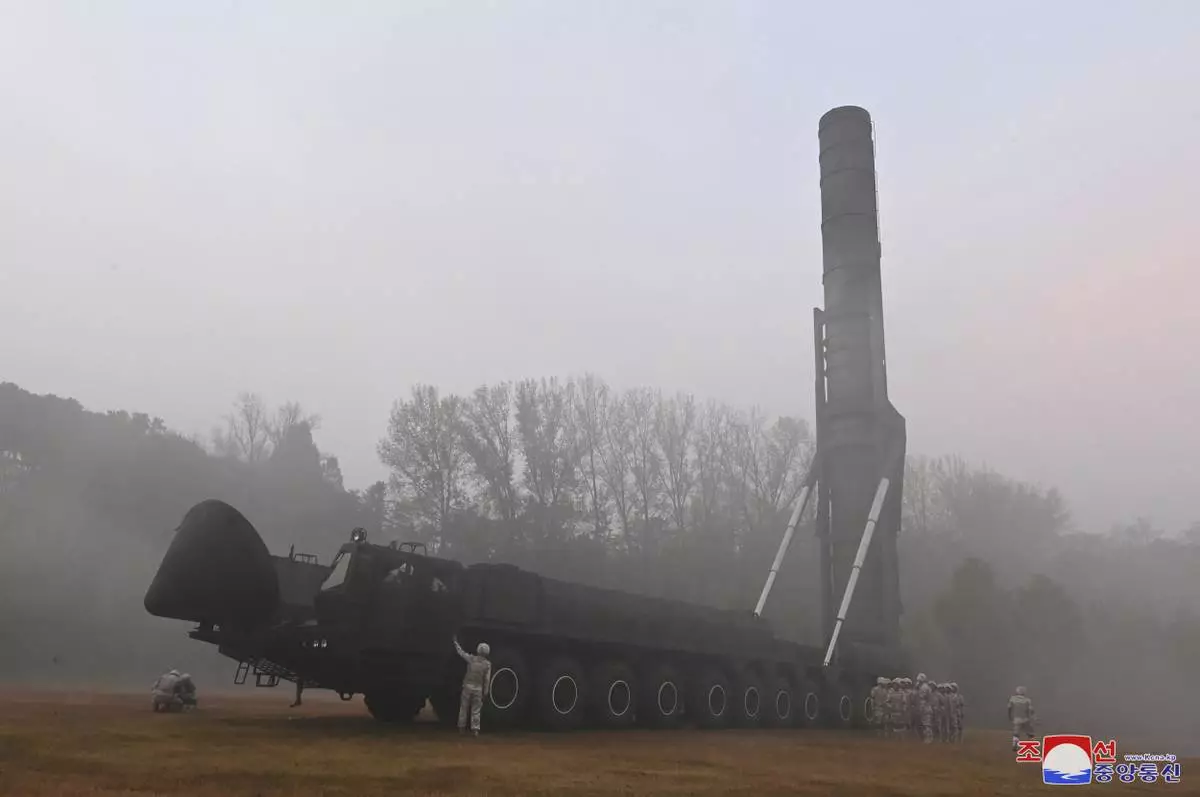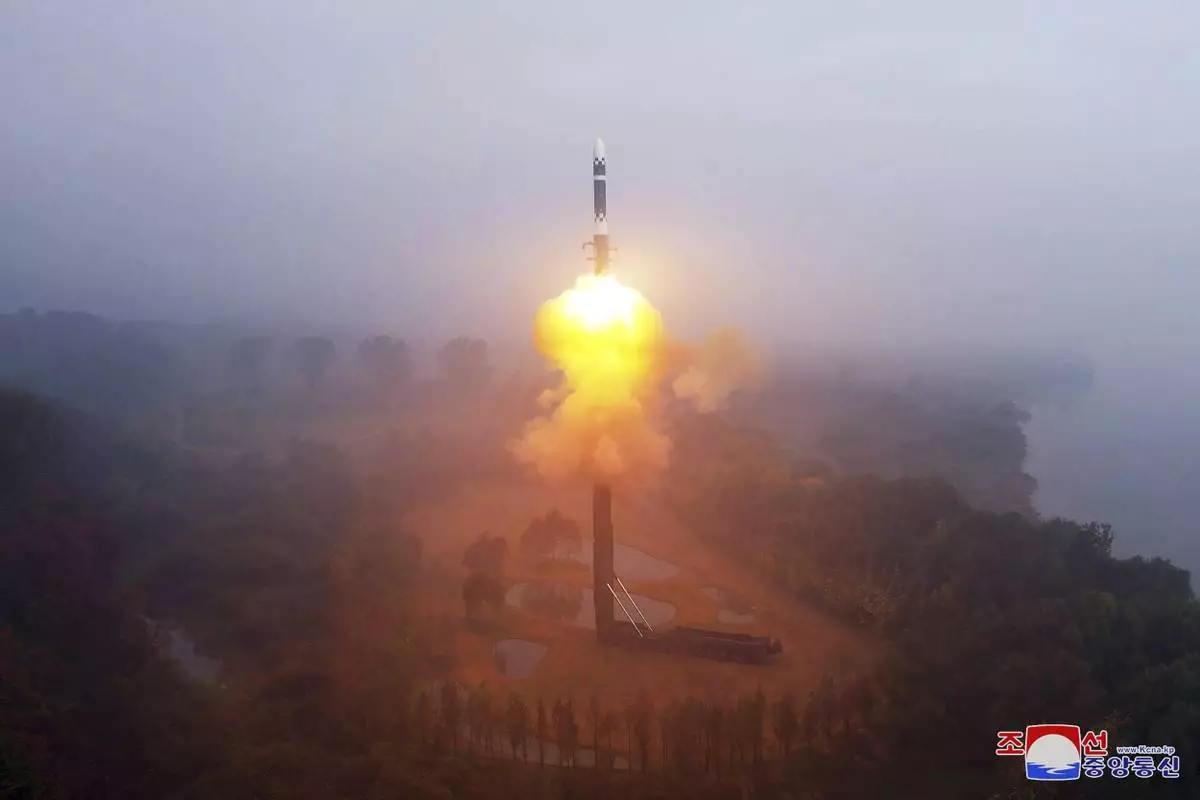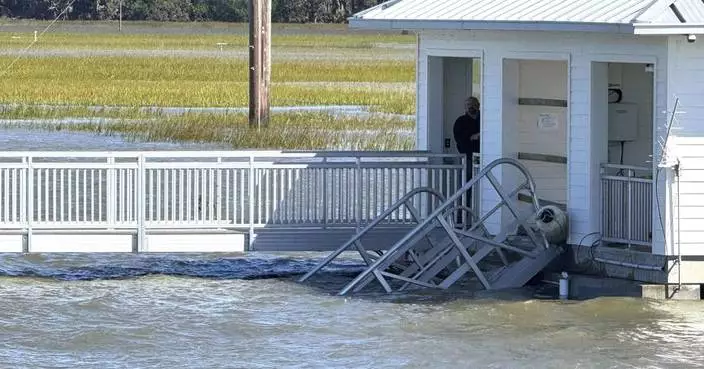Things to watch this week in the Big 12 Conference:
No. 11 Iowa State (7-0, 4-0 Big 12) vs. Texas Tech (5-3, 3-2), Saturday, 3:30 p.m. ET (ESPN).
Iowa State is going into November without a loss for only the third time in the program's 133-year history. The other times were 1916 and 1938. The Cyclones, who are coming off an open date, have allowed only 14 points and 133 yards passing per game. They have won their last five Big 12 games — they have never won six in a row. Texas Tech is coming off back-to-back losses after starting 3-0 in league play. The Red Raiders blew a 17-point lead after halftime in a 35-34 loss at TCU last week. Big 12 rushing leader Tahj Brooks has rushed for at least 95 yards in 18 consecutive Tech games, one short of matching the longest FBS streak since 1996. He has at least 100 yards in 15 of those games. The Cyclones are second-to-last in the Big 12 allowing 170 yards rushing per game, including 354 in their last game.
No. 15 Kansas State (7-1, 4-1) goes for its fifth consecutive win since a lopsided 38-9 loss in its Big 12 opener at still-undefeated BYU on Sept. 21. The Wildcats play Saturday at Houston (3-5, 2-3), which has won two of three games since being shut out in each of its first two conference games. The teams have played only once before, in the Cougars' Big 12 debut last year when they lost 41-0 in Manhattan, Kansas.
Baylor linebacker Matt Jones had a career-high 10 solo stops and 12 tackles overall in a win over Oklahoma State last week. He had three tackles for loss, a sack and a forced fumble at the goal line. He leads Baylor (4-4, 2-3) with his nine tackles per game that rank second in the Big 12. He is tied for the league lead with three sacks. Jones had 11 tackles last season against TCU (5-3, 3-2), which plays in Waco on Saturday.
Oklahoma State's five-game losing streak matches its longest since the program lost five in a row in 2014. The last longer streak was seven losses in a row in 2000. The Cowboys (3-6, 0-5) will try to end that skid in their homecoming game against Big 12 newcomer Arizona State (5-2, 2-2). The Sun Devils lost to Oklahoma State each of the past two seasons. ... Arizona plays a game in the Eastern time zone for the first time since 1999 at UCF on Saturday. ... Wildcats WR Tetairoa McMillan leads the Big 12 and ranks third nationally with 982 receiving yards. ... Six teams have their second and final open dates this season: No. 9 BYU (8-0, 5-0), No. 23 Colorado (6-2, 4-1), Cincinnati (5-3, 3-2), Kansas (2-6, 1-4) Utah (4-4, 1-4) and West Virginia (4-4, 3-2).
Colorado (6-2, 4-1) became the fourth Big 12 team to get bowl eligible with its win over Cincinnati last weekend. BYU, Iowa State and K-State already had six wins needed for bowl eligibility. Arizona State, Texas Tech and TCU can all get their sixth win this weekend.
Get alerts on the latest AP Top 25 poll throughout the season. Sign up here. AP college football: https://apnews.com/hub/college-football and https://apnews.com/hub/ap-top-25-college-football-poll

Arizona wide receiver Tetairoa McMillan (4) tries to make the catch over West Virginia cornerback Garnett Hollis Jr. in the second half during an NCAA college football game, Saturday, Oct. 26, 2024, in Tucson, Ariz. (AP Photo/Rick Scuteri)
SEOUL, South Korea (AP) — North Korea on Friday bragged of its recently tested new intercontinental ballistic missile, calling it “the world’s strongest,” a claim viewed by outside experts as propaganda though the test showed an advancement in the North's quest to build a more reliable weapons arsenal.
A missile launched by North Korea on Thursday flew higher and stayed in the air for a longer duration than any other weapon the country had so far fired. It signaled that the North has achieved progress in acquiring a nuclear-armed ICBM that can hit the U.S. mainland. But foreign experts assess that the country has still a few remaining technological issues to master before acquiring such a functioning ICBM.
On Friday, the North’s Korean Central News Agency identified the missile as “Hwasong-19” ICBM and called it “the world’s strongest strategic missile” and “the perfected weapon system.”
KCNA said leader Kim Jong Un observed the launch, describing it as “an appropriate military action” to express North Korea’s resolve to respond to its enemies’ moves that escalated tensions and threats to North Korea’s national security. It said Kim thanked weapons scientists for demonstrating North Korea’s “matchless strategic nuclear attack capability.”
South Korea’s military earlier said that North Korea could have tested a solid-fueled missile but Friday’s KCNA dispatch didn’t say what propellant the Hwasong-19 ICBM uses. Observers say the color of exhaust flames seen in North Korean media photos on the launch still suggest the new ICBM uses solid fuels.
Before Thursday’s test, North Korea’s most advanced ICBM was known as the “Hwasong-18” missile which uses solid fuels. Pre-loaded solid propellants make it easier to move missiles and require much less launch preparation times than liquid propellants that must be fueled before liftoffs. So it’s more difficult for opponents to detect launches by solid-fuel missiles.
In recent years, North Korea has reported steady advancement in its efforts to obtain nuclear-tipped missiles. Many foreign experts believe North Korea likely has missiles that can deliver nuclear strikes on all of South Korea, but it has yet to possess nuclear missiles that can travel to the mainland U.S.
There are questions on whether North Korea has acquired the technology to shield warheads from the high-temperature, high-stress environment of atmospheric reentry. Many foreign analysts say North Korea also must have improved altitude control and guidance systems for missiles. They say North Korea needs an ability to place multiple warheads on a single missile to defeat its rivals’ missile defenses.
All of North Korea’s known ICBM tests, including Thursday’s, have been performed on steep angles to avoid neighboring countries. South Korean military spokesperson Lee Sung Joon said Thursday that a high-angel trajectory launch cannot verify a missile’s re-entry vehicle technology, though North Korea has previously claimed to have acquired that technology.
Observers say that Thursday's launch, the North's first ICBM test in almost a year, was largely meant to grab American attention days before the U.S. presidential election and respond to international condemnation over North Korea's reported dispatch of troops to Russia to support its war against Ukraine.
North Korea's reported troop dispatch highlights the expanding military cooperation between North Korea and Russia. South Korea. the U.S. and others worry North Korea might seek high-tech, sensitive Russian technology to perfect its nuclear and missile programs in return for joining the Russian-Ukraine war.
__
Associated Press writer Kim Tong-hyung contributed to this report.

This photo provided by the North Korean government, shows what it says a test launch of new intercontinental ballistic missile "Hwasong-19" at an undisclosed place in North Korea Thursday, Oct. 31, 2024. Independent journalists were not given access to cover the event depicted in this image distributed by the North Korean government. The content of this image is as provided and cannot be independently verified. Korean language watermark on image as provided by source reads: "KCNA" which is the abbreviation for Korean Central News Agency. (Korean Central News Agency/Korea News Service via AP)

This photo provided by the North Korean government, shows what it says a test launch of new intercontinental ballistic missile "Hwasong-19" at an undisclosed place in North Korea Thursday, Oct. 31, 2024. Independent journalists were not given access to cover the event depicted in this image distributed by the North Korean government. The content of this image is as provided and cannot be independently verified. Korean language watermark on image as provided by source reads: "KCNA" which is the abbreviation for Korean Central News Agency. (Korean Central News Agency/Korea News Service via AP)

This photo provided by the North Korean government, shows what it says a test launch of new intercontinental ballistic missile "Hwasong-19" at an undisclosed place in North Korea Thursday, Oct. 31, 2024. Independent journalists were not given access to cover the event depicted in this image distributed by the North Korean government. The content of this image is as provided and cannot be independently verified. Korean language watermark on image as provided by source reads: "KCNA" which is the abbreviation for Korean Central News Agency. (Korean Central News Agency/Korea News Service via AP)













